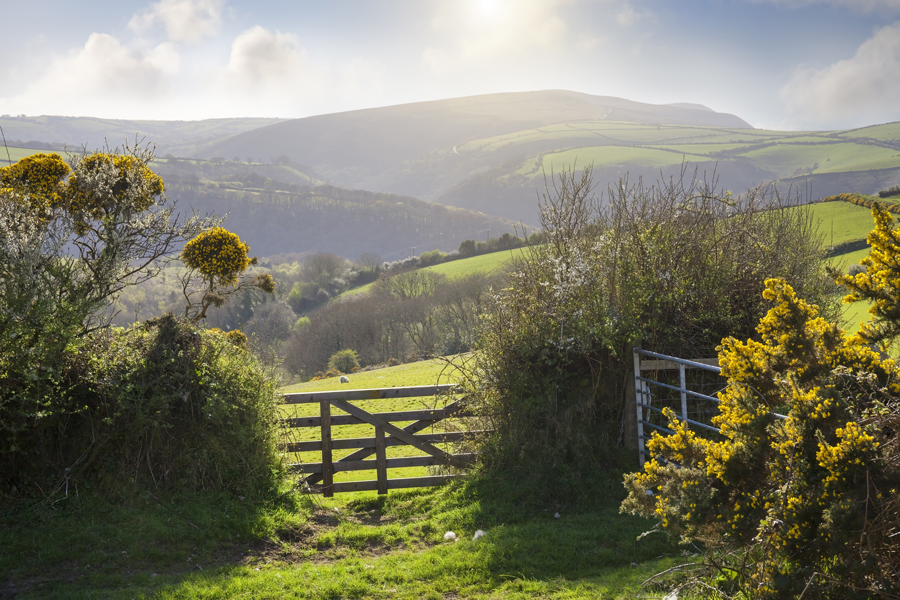Farmland rights of way: Everything landowners need to know
6th July 2020
As lockdown restrictions continue to ease across the UK, more and more people are venturing into the great outdoors to enjoy some fresh air and get their daily dose of exercise. But for farmers, this can mean an influx of strangers walking across their land.
According to The World Bank, 71% of the country is classed as agricultural land, meaning that many of the UK’s seemingly empty fields could, in fact, belong to someone and so walkers could find themselves guilty of trespassing without realising it.
Simon Waterfield, partner and solicitor in Nelsons’ dispute resolution team, who has extensive expertise in rights of way claims, explains the various options open to landowners when it comes to managing rights of way across their property.
He said: “Owning property doesn’t necessarily mean an exclusive right to it. Other people may have legal rights over the land that need to be observed so it’s an area of law that frequently leads to tensions and disputes.
“By definition, a right of way is a legal right to pass over someone else’s property. Whether across footpaths or private land, both of these have the potential to cause legal and practical problems for property owners. The main area of contention tends to be around whether a right of way exists and to what extent, and what the obligations are in relation to it.”
The right to roam
“The key thing to be aware of is that there’s actually no right to roam in England and Wales – Scotland is slightly different – but generally speaking, civilians have no right to walk across someone’s private land without it being classed as trespassing. Therefore, in common law, an owner is entitled to remove somebody using reasonable force.
“However, landowners won’t want it to come to this and therefore are within their rights to erect signage explaining whereabouts the existing right of way is. Whereas, if no such way exists, there are a few options that they should be aware of which can help stop a new right of way being created on their land.”
Erecting notices and signage
“By maintaining notices, landowners can prevent or diminish the chances of a successful claim for the existence of a public right of way under Section 31 of the Highways Act 1980. However, there are certain measures that must be taken to ensure this.
“The notice must be designed in a ‘legible manner’ and be of ‘sufficient size’ as well as be positioned clearly to identify the land it seeks to protect so it’s clear for users. If there isn’t any signage or the notice isn’t clear, members of the public could easily end up ambling anywhere across private land and, ultimately, create a right of way in an area the landowner would rather not have.”
Submit a section 31(6) statutory declaration
“Section 31(6) of the act allows landowners to acknowledge the presence of an existing right of way across their land and so can prevent new rights being established. This is particularly useful if someone already has an area of land being used by members of the public as it allows more clarity and stops people being able to acquire any rights over the land.
“To do this, the landowner must complete an application form, deposit a map, statement and statutory declaration with the highway authority (normally the county council) showing which public rights of way are being acknowledged and declaring that there’s no intention to dedicate additional ways.”
Rules around roaming animals
“It’s likely that we’ve all seen the signs saying ‘dogs not on leads will be shot’ while taking a walk in the English countryside. However, the fact of the matter is that dogs are counted as property, so shooting one could trigger a criminal damage charge except in certain extenuating circumstances.
“According to the National Sheep Association, in order for a shooting to be legal the landowner would have to show that they acted in the belief that their property, for example livestock, was in immediate danger and that they undertook ‘reasonable action’. What classes as ‘reasonable’ can differ depending on the situation, such as if they’ve had problems with a particular dog before and the owner has refused requests to control the animal.
“It’s crucial to remember landowners are not entitled to shoot a dog if it’s already left the vicinity and is no longer a danger to livestock, even if there’s a fear it might come back in future.
“It’s also possible that the dog’s owner could sue for trespass to goods. The Animal Health Act 1971 offers the defence that they were protecting livestock if the landowner can show they reasonably believed either:
- The dog was worrying, or about to worry, the livestock and there were no other reasonable means of ending or preventing this.
- The dog had been worrying livestock, stayed in the vicinity and was not under the control of anyone and there were no practical means of finding the owner.
“If a shooting takes place it must be reported to the police within 48 hours. If it is not, none of these defences will be valid in civil proceedings.”
Act now
“By doing nothing, landowners run the risk of creating rights in the long term by default. If the general public is allowed to cross a certain area of land for 20 years, a public right of way could be created across it. Members of the public are entitled to make an application to have a right of way registered and therefore this would take control away from the owner of the land.”
For support and advice when it comes to rights of way disputes, please visit: https://www.nelsonslaw.co.uk/property-disputes/rights-way-access/.



